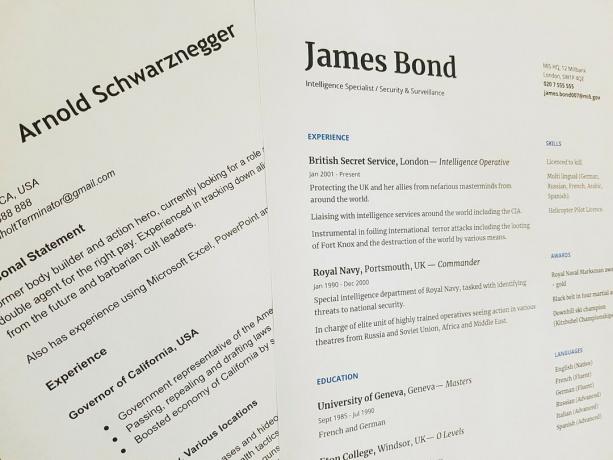You want to know How to do anCurriculum vitae? Various studies show that HR recruiters look at these for only a few seconds before discarding it or having it as an option, so it is important to do it correctly.
This may seem unfair, but with so many resumes to view during the day it is impossible for them to stop and read each one. If you want Make a good resume and grab the attention of recruiters keep reading this post. You can check this online tool to create CV: https://ejemplos-curriculum.com/
Advertisements

In this article you will find:
What is a curriculum vitae?
It is a document that offers a fairly complete summary of your work experience and academic training. Teaching experience, your degrees, research, awards, your presentations and any other achievements are included. Skills and credentials can also be included.
Advertisements
Types of curriculum vitae
Although they all look quite similar to most of us, there are several types of curriculum vitae:
Chronological Curriculum
It is mainly characterized by its structure where the most important thing to highlight are academic training and work experience, complementing the rest of it with information about the skills you can contribute.
Advertisements
This is structured as follows:
- Contact information.
- A brief description of your professional goals.
- Demonstrable work experiences.
- Information on academic training.
- Additional skills that correspond to the position.
- Languages spoken.
Functional Curriculum
In this type of CV, the fundamental thing is the skills that you can bring to the company and describe your goals at a professional level. Work experience and education is brief as you can better explain it during an interview with recruiters.
Advertisements
The structure that it handles is the following:
- Contact information.
- Brief description of your professional goals.
- A summary of the skills.
- Additional skills that correspond to the position.
- Languages spoken.
- Demonstrable work experiences, a short summary.
- Information on academic training, a brief summary.
Combined or Mixed Curriculum
As its name implies it is a mixture of those mentioned above. In these CVs the idea is to make brief summaries of each of the parts of a curriculum so that at a glance can impress or attract the attention of recruiters, and later explain each point better in an interview labor.
Advertisements
This version of CV is structured in this way:
- Contact information.
- A brief description of your professional goals.
- A summary of skills and accomplishments.
- Demonstrable work experiences.
- Information on academic training.
- Additional skills that correspond to the position, including spoken languages and software management.
Hobbies, volunteers and certificates can be placed as additional information on all CVs. This is optional and should be included only if it has an important relationship with the position to be held.
How to make your curriculum vitae?
Now that you know what the structure of the different types of CVTo do your own tutoring, the first thing to do is decide which one you want for yourself.
Once you decide, you should make a list with the information you want to include on your resume. The idea is to customize it so that it highlights the necessary aspects, especially the experience you have and that is relevant to the job you are applying for.
It is true that it takes a long time to write a very personalized resume, but it is worth the effort, especially when it comes to applying for jobs that are well suited to your skills and experience.
- Use achievement-oriented vignettes that start or include a specific result or that start directly with actions.
- Make sure you create a professional profile that highlights the best of what you offer as a candidate for the position you are applying for.
- Edit the content seeking to include in the best possible way your experience, skills and knowledge that are specifically tailored to the requirements of the position.
- Leave out any unnecessary details that you can better reveal or explain during the interview.
- Carefully classify and organize the sections of your CV based on what you are looking for from the institution you are applying to.
- For example, if you are applying to a university that emphasizes research, you should start your list of posts on the first page, right after your professional profile initial.
- If, on the other hand, you know that the department values teaching over publication, you should prioritize your professional history on the first page.
Know how making a resume is very important, a small error in this can make you discard an excellent job opportunity despite having all the skills to perform it correctly.

